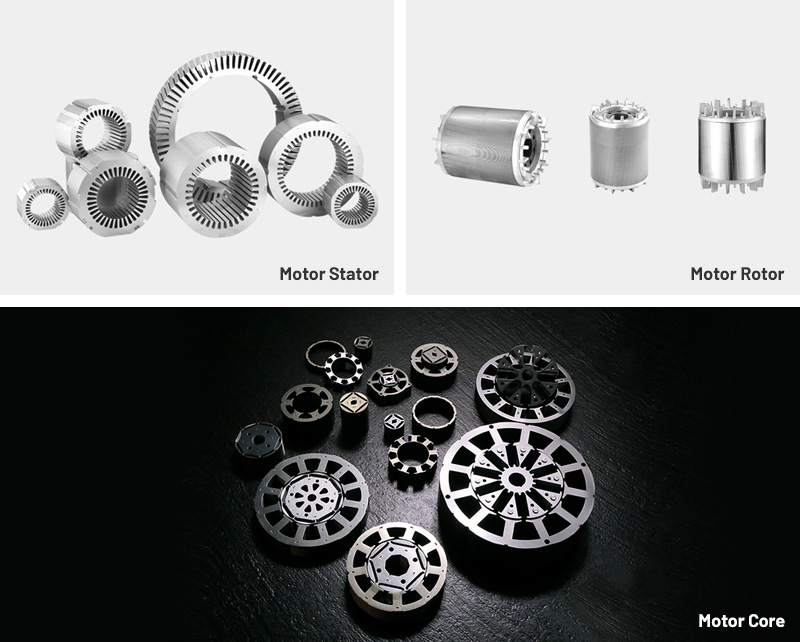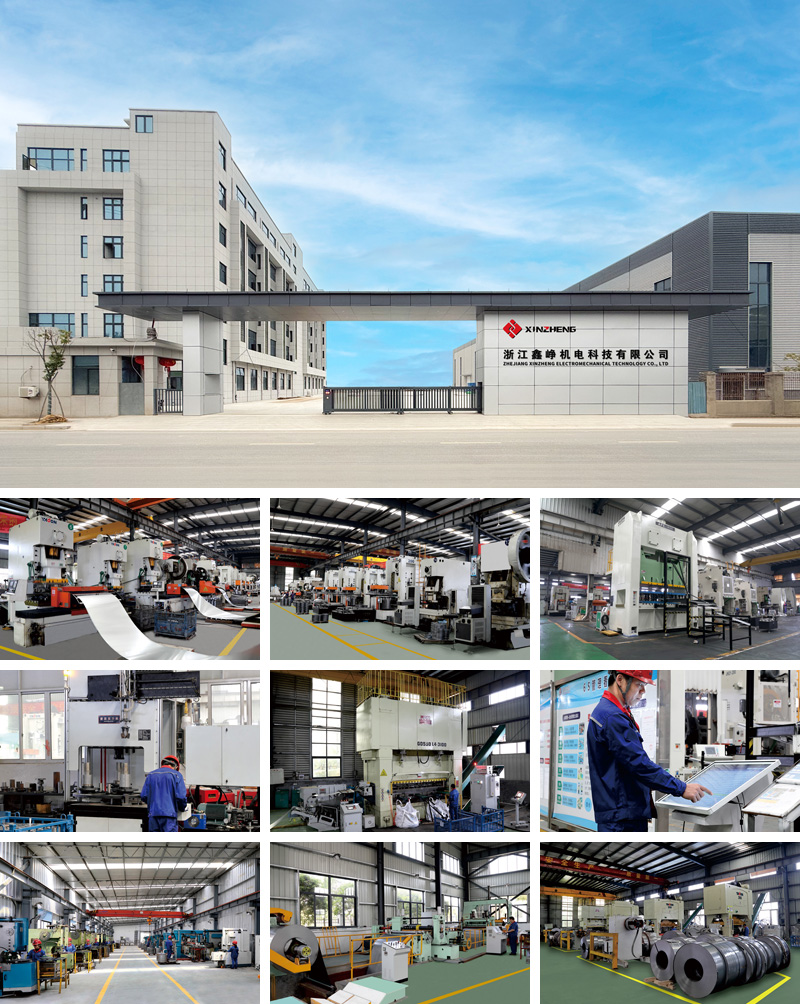High-efficiency motors have become essential to modern industrial systems as manufacturers aim to reduce energy consumption, meet regulatory requirements, and improve operational reliability. In Europe, North America, and other mature markets, efficiency classifications continue to advance, placing greater emphasis on magnetic components that directly influence motor performance.
The introduction of the YE5 high-efficiency motor stator laminations aligns with the global transition toward improved energy efficiency. As efficiency classes evolve, more stringent control of core loss, magnetic permeability, and thermal stability is required. stator laminations form the magnetic backbone of the motor, and even small improvements in steel quality, insulation, or stamping precision can translate into measurable gains in system efficiency. This makes lamination engineering a strategic focus point for motor manufacturers seeking competitive advantage in industrial sectors such as HVAC, oil and gas, mining, and automated production equipment.
The performance of YE5-rated motors is largely determined by the electromagnetic characteristics of the stator core. Several engineering principles define how YE5 high-efficiency motor stator laminations operate and contribute to system efficiency.
The stator laminations guide the alternating magnetic flux generated by the windings. Their design impacts flux density distribution, iron loss behavior, and torque generation. High-efficiency performance requires uniform flux conduction with minimal distortion.
Laminations are insulated from each other to suppress eddy-current losses. The insulation coating acts as a thermal and electrical barrier, improving high-frequency performance and reducing local heating.
Electrical steel properties determine hysteresis loss, eddy-current loss, and the overall efficiency of the motor. Low-loss steel grades are essential for YE5 performance, especially under continuous duty cycles.
The structural integrity of the stator lamination stack affects noise levels, thermal expansion characteristics, and long-term durability. Dimensional precision ensures correct coil placement and stable operation.
With higher efficiency classes comes the need for improved heat dissipation. Laminations with better permeability and lower loss produce less heat, protecting winding insulation and extending motor lifespan.
YE5 motor stator laminations typically use advanced grades of non-oriented electrical steel. Important material characteristics include:
Low specific core loss
High magnetic permeability
High electrical resistivity
Consistent thickness tolerance
Good coating adhesion
Steel thickness commonly ranges from 0.27 mm to 0.35 mm to reduce core losses while maintaining mechanical strength.
The slot shape influences winding density, magnetic flux behavior, and temperature rise. For YE5 performance, stator slots must provide:
Adequate space for optimized copper fill
Uniform flux distribution
Reduced harmonic distortion
Improved thermal dissipation
Slot insulation compatibility is also critical to ensure long-term reliability.
High-speed progressive dies are used to punch lamination shapes from electrical steel. Quality considerations include:
Minimal burrs to prevent interlaminar shorts
Dimensional accuracy to support consistent winding placement
Precise tooth geometry for stable magnetic performance
Optimal tooling wear control to maintain long-run consistency
Continuous monitoring is essential because even microscopic deviations can affect the electromagnetic behavior of YE5 motors.
Stator laminations can be assembled via:
Interlocking tabs
Welding
Riveting
Bonding adhesives
Each method influences mechanical rigidity, noise characteristics, and allowable thermal expansion. For high-efficiency motors, stable stack compression and low deformation are priorities.
The insulation coating must withstand high temperatures and frequent thermal cycling. Coating types commonly used for YE5 include:
Inorganic coatings
Hybrid organic-inorganic layers
Insulation classes compatible with motor thermal ratings
Uniform coating thickness is essential to ensure predictable loss performance.
Several factors determine whether stator laminations can achieve YE5 efficiency levels:
Variability in chemical composition or magnetic properties can significantly shift core loss behavior.
Burrs increase losses, create hotspots, and may damage coil insulation during winding.
Accurate tooth width, inner diameter, and stack length are necessary for balanced magnetic flux and controlled temperature rise.
Poor adhesion leads to insulation breakdown, resulting in efficiency loss and local heating.
Incorrect stacking pressure or misaligned laminations reduce magnetic uniformity and create vibration.
Motor manufacturers selecting a supplier for YE5 stator laminations typically evaluate:
Reliable suppliers document steel origins, grade certifications, coating specifications, and quality metrics.
High-precision dies ensure repeatable lamination quality across large production volumes.
Standard inspections include:
Core loss testing
Eddy-current defect detection
Laser dimensional measurement
Coating thickness assessment
Large industrial clients require consistent production planning, standardized packaging, and minimal variation between batches.
Manufacturers must meet applicable IEC motor frame standards and quality management certifications.
Even with advanced materials and manufacturing technologies, challenges persist:
Fluctuations in steel markets increase production costs for high-efficiency laminations.
Progressive die wear can slowly degrade lamination quality without proper maintenance.
Overheating during stamping or stress during stacking may compromise coating performance.
Stator slots with tight tolerances may challenge coil insertion and require precise automation.
As standards rise, the margin for manufacturing errors becomes increasingly small.
The YE5 high-efficiency motor stator laminations are widely used across industries seeking superior energy performance:
Pumping systems in water treatment and petrochemical plants
HVAC compressors and industrial ventilation equipment
Machinery with continuous or variable-speed operation
Automated manufacturing and robotics
Power transmission and mechanical processing equipment
In each application, low core loss and stable magnetic properties contribute to reduced energy consumption and longer operational life.
Manufacturers are exploring steels with even higher resistivity and improved grain structure.
Laser cutting provides excellent accuracy for prototype or specialty laminations.
Real-time data collection improves production consistency and traceability.
Advanced coatings support higher thermal class motors and improved reliability.
Efforts focus on reducing scrap, improving steel recyclability, and adopting greener coating technologies.
They use lower-loss steel grades, improved insulation coatings, and tighter dimensional control to meet higher efficiency requirements.
Common values range from 0.27 mm to 0.35 mm, depending on motor design and performance targets.
It suppresses interlaminar currents, reduces heating, and ensures long-term electrical stability.
Accurate slot geometry improves coil placement, enhancing electromagnetic performance.
Product Category

Comprehensive Strength


Copyright © Zhejiang Xinzheng Electromechanical Technology Co., Ltd. All Rights Reserved.
This website uses cookies to ensure you get the best experience on our website.